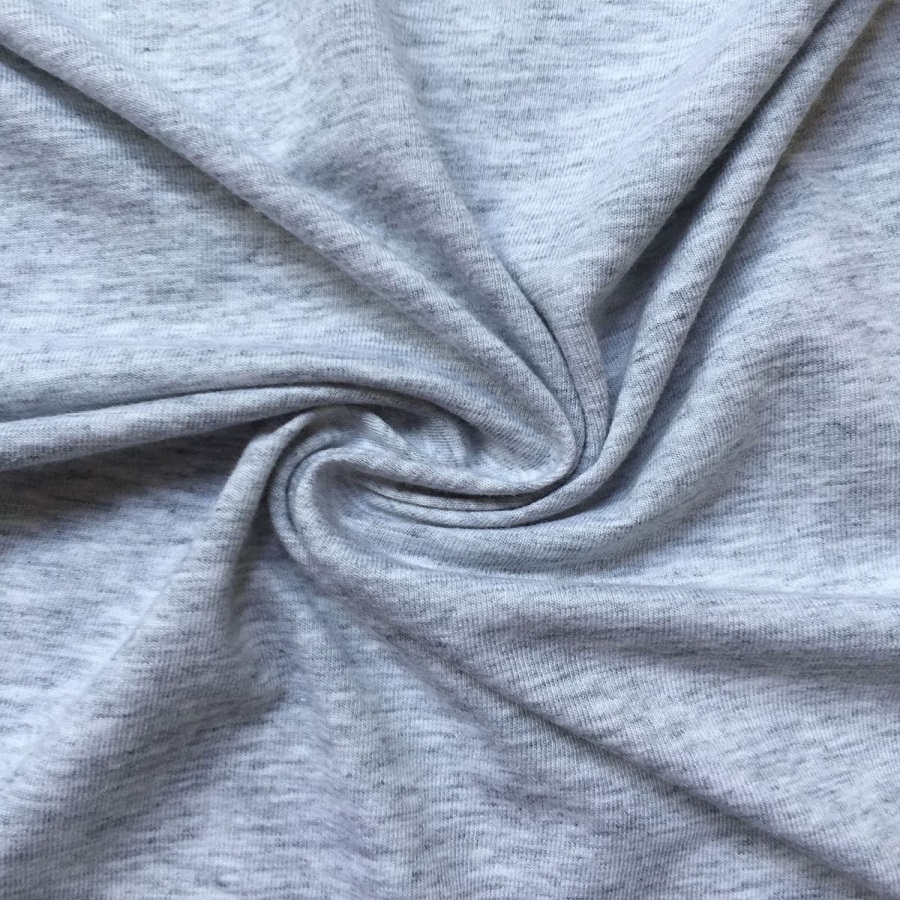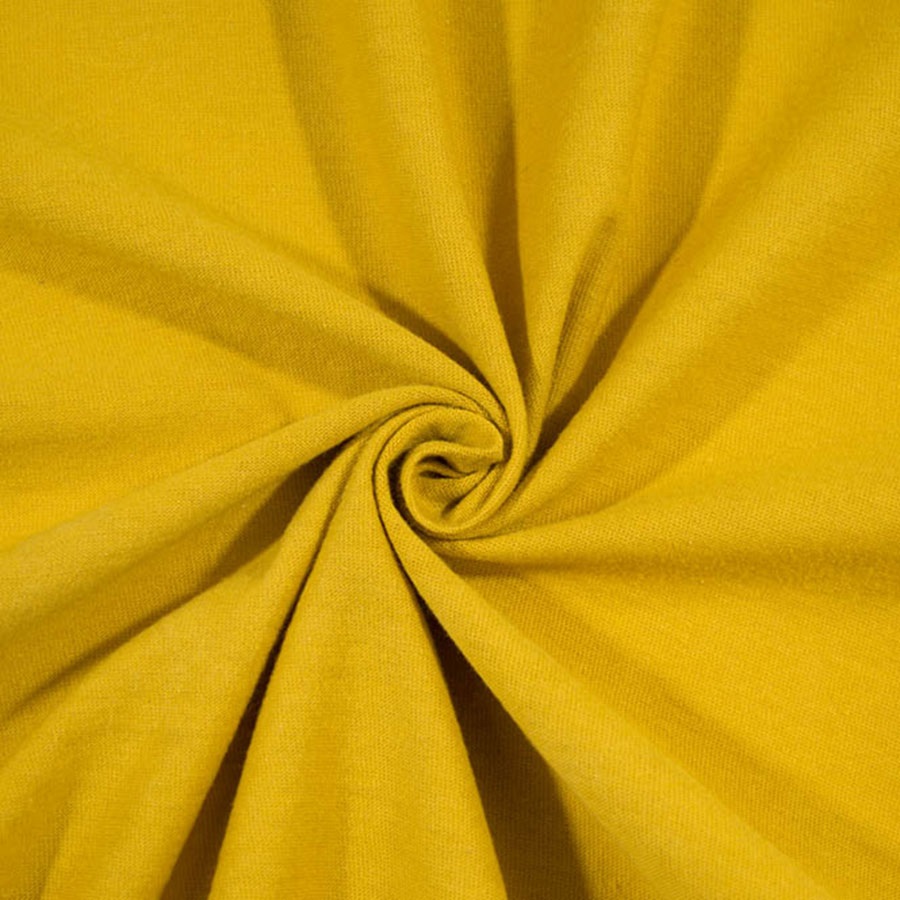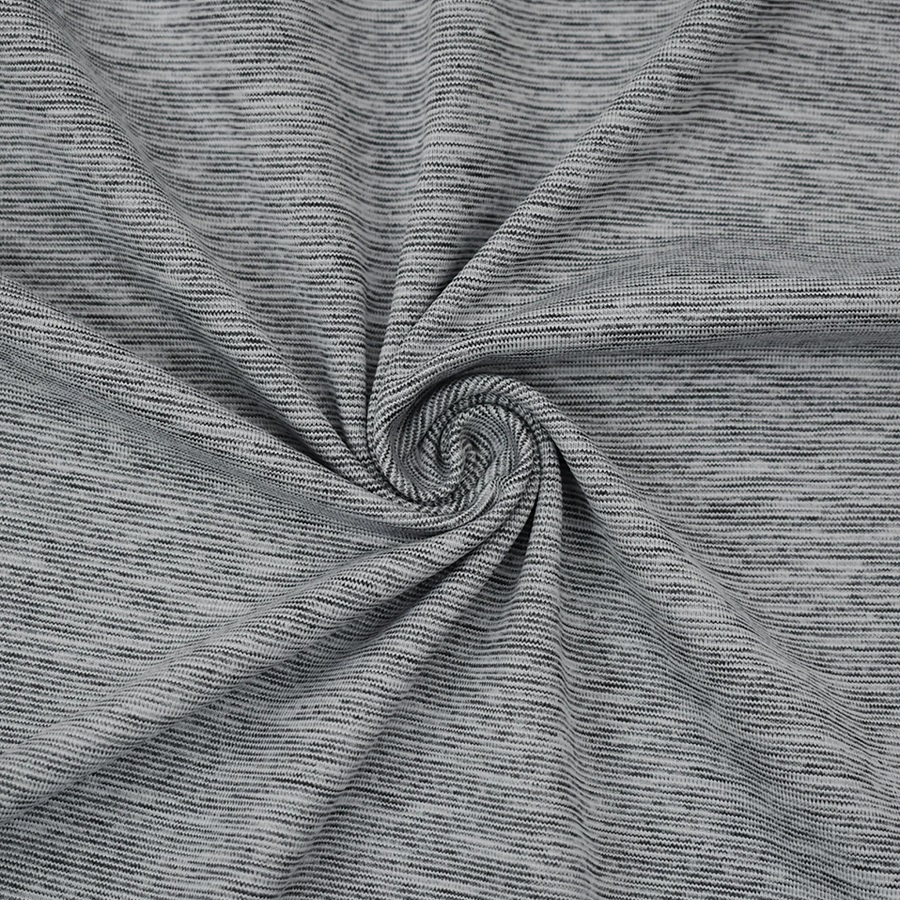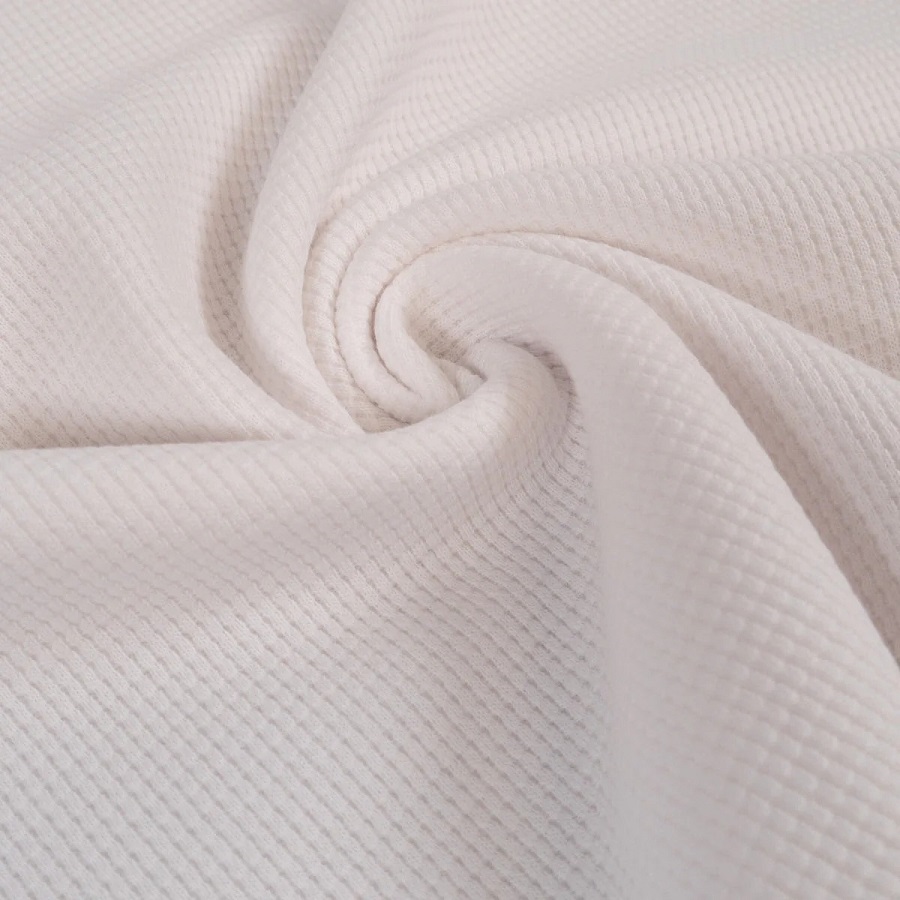Introduction to Cotton Jersey Knit Fabric
Cotton jersey knit fabric is a staple in the world of comfortable apparel. Known for its softness, durability, and stretch, this fabric has become a favorite for designers and DIY enthusiasts alike. It stands out due to its unique knit structure, allowing for a natural give that hugs the body without constraining movement.
The fabric is made from cotton fibers, which are spun into yarn and then knitted into a smooth, flat surface. One side is typically smooth, showcasing fine rows of stitches, while the other side has a softer, looped texture. This combination of textures provides both comfort and visual appeal, making it versatile for various clothing items.
From t-shirts to dresses, cotton jersey knit fabric allows for breathability and moisture-wicking properties, suited for daily wear and active lifestyles. The range of weights and finishes available also opens up a myriad of uses in fashion, proving that this fabric is not just comfortable but also adaptable to different design needs.
Incorporating cotton jersey knit fabric into a wardrobe offers both comfort and style. The ease of care and maintenance further adds to its appeal, ensuring that garments made from this material remain a part of our closets for years to come. As we dive deeper into the world of cotton jersey knits, we will explore the processes that create this impressive fabric, the different types available, and practical tips for working with it in upcoming sections.

The Process of Making Cotton Jersey Knit
Making cotton jersey knit fabric involves several steps. First, cotton fibers are harvested and cleaned to remove impurities. Farmers pick the cotton from fields and process it through machines. The cleaning ensures fibers are free from seeds and dirt. Next, these fibers spin into yarn. Spinning stretches and twists the cotton into long, sturdy threads.
Once spun, the yarn is knitted together. Knitting uses a series of loops to create the fabric’s texture. Machines or hand knitting can do this. The knitting process is key, as it gives the fabric its stretch and softness. Each loop interlocks with the next, creating the fabric’s unique structure.
After knitting, manufacturers dye the fabric. Dyeing can happen before or after knitting. The method selected affects the final look of the fabric. How fabric is dyed also impacts its texture and durability. After dyeing, the fabric is finished. Finishing can involve softening, shrinking, or strengthening the fabric. The goal is to prepare it for the market and eventual use in clothing.
To sum up, the process of making cotton jersey knit fabric is detailed and vital to its quality. It covers everything from cleaning cotton fibers to finishing the knitted material. Each step is critical to ensure the fabric’s signature comfort and flexibility.
Types of Cotton Jersey Knit Fabrics
Cotton jersey knit fabric comes in multiple types to suit different needs. The variations come from the cotton fiber, knit pattern, and weight. Here we look at the main types you might encounter.
Single Jersey Knit
This type is the most common. It has a smooth surface on one side and a piled texture on the other. It’s lightweight and stretchy, perfect for t-shirts and tops.
Double Jersey Knit
Double jersey is thicker and more stable than single jersey. It has knit stitches on both sides. You’ll find it in heavier tops and activewear.
Interlock Jersey Knit
Interlock jersey is a variation of double jersey. It’s fine, with a smooth surface on both sides. It’s soft, yet durable, ideal for baby clothes and pajamas.
Rib Knit Jersey
This type has visible vertical stripes. It’s more elastic and often used in cuffs and neckbands.
Slub Jersey Knit
Slub jersey includes slight knots and knobbles in the yarn. It gives texture and a rustic look to garments.
Jacquard Jersey Knit
With intricate patterns knitted into the fabric, Jacquard jersey is decorative. It’s used in more formal wear.
Each type of cotton jersey knit fabric provides unique benefits. Designers choose based on the needs of their garment designs. Consumers might choose for comfort, style, or the nature of the activity they need the clothing for. What they all share is the core quality of cotton jersey knit fabric: comfort, durability, and a soft touch. Understanding these types will guide you in selecting the right fabric for your project.

Benefits of Wearing Cotton Jersey Knit Apparel
Cotton jersey knit fabric isn’t just versatile; it has multiple benefits for the wearer. Recognized for its comfort, this fabric is an ideal choice for a range of apparel options. Let’s explore why cotton jersey knit is highly favored in the creation of comfortable clothing.
Soft and Gentle on the Skin
Cotton jersey knit feels soft to the touch, making it incredibly gentle against the skin. This reduces the likelihood of irritation or discomfort, particularly important for sensitive skin.
Stretchability for a Better Fit
The inherent stretchiness of cotton jersey knit provides a better fit. It conforms to the body’s contours without feeling restrictive, enhancing movement and flexibility.
Breathability for All-Day Comfort
Garments made from cotton jersey knit are breathable. They allow for air circulation, preventing overheating and ensuring comfort throughout the day.
Moisture-Wicking Properties
Cotton jersey knit has the ability to wick moisture away from the body. This makes it an excellent choice for activewear or any clothing worn in warm climates.
Durability for Longevity
Despite its softness, cotton jersey knit is durable. It can withstand numerous washes, retaining its shape and texture, which extends the life of the garments.
Low Maintenance Requirements
Easy to care for, cotton jersey knit clothing doesn’t demand much. It’s machine washable and requires minimal ironing, saving time and effort in maintenance.
Incorporating cotton jersey knit into your wardrobe is not just a choice for comfort; it’s a smart decision for long-lasting, easy-to-maintain clothing that feels great to wear in any situation.
Considerations for Sewing with Cotton Jersey Knit
When working with cotton jersey knit fabric, certain considerations will help you achieve the best results. Here are essential tips to keep in mind:
Choose the Right Needles and Thread
Use ballpoint needles to prevent snags or runs in the fabric. Select polyester thread for its stretch and durability.
Adjust the Sewing Machine Settings
Set your machine to a narrow zigzag stitch. This allows the seam to stretch with the fabric.
Cut with Care
Use sharp scissors or a rotary cutter for clean edges. Take care not to stretch the fabric while cutting.
Stabilize the Seams
Consider using a stabilizer for hems or areas that need more structure. This prevents waviness.
Practice Mindful Stretching
Stretch the fabric slightly, but not too much, when sewing. This assists in preventing puckered seams.
Test on Fabric Scraps
Always run a few practice seams on scrap pieces. This helps you adjust tension and technique before starting your project.
Be Patient and Go Slow
Take your time, especially if you’re new to sewing with knits. Rushing can lead to mistakes and uneven stitching.
Following these steps, you can create beautiful, comfortable garments with cotton jersey knit fabric that look professional and last long.

Maintenance and Care for Cotton Jersey Knit Items
Caring for cotton jersey knit fabric is straightforward. Follow these practical tips to keep your items in top condition.
Read the Care Label
Always check the label for washing and drying instructions. This ensures the longevity of your garments.
Wash with Similar Fabrics
Group cotton jersey items with alike materials. This prevents rougher fabrics from causing pilling or damage.
Use Gentle Detergent
Opt for mild detergent to maintain fabric softness. Harsh chemicals can break down fibers over time.
Cold Wash is Preferable
Wash cotton jersey knit in cold water. It helps preserve color and prevents shrinkage.
Avoid Bleach
Bleach is too harsh for cotton jersey knit fabric. It can weaken fibers and fade colors.
Tumble Dry on Low or Air Dry
If machine drying, use a low heat setting. Air drying is even better to retain shape and texture.
Iron on Low Heat
If needed, iron on low heat and never directly. Use a press cloth to protect the fabric’s surface.
By adhering to these care guidelines, your cotton jersey knit items will continue to provide comfort and style through repeated use. The fabric’s durability and low maintenance requirements make it an excellent long-term wardrobe investment.
Common Uses of Cotton Jersey Knit in Fashion
Cotton jersey knit fabric is a popular choice in the fashion industry for its versatility and comfort. Here are some common uses of cotton jersey knit in fashion that highlight its flexibility:
Everyday Casual Wear
Cotton jersey knit fabric is perfect for everyday clothing like t-shirts, dresses, and skirts. These items offer ease of movement and casual style.
Activewear
Due to its stretch and moisture-wicking properties, cotton jersey knit fabric is widely used in activewear. It’s ideal for yoga pants, leggings, and sports tops.
Children’s Clothing
Soft, durable, and easy to maintain, cotton jersey knit is a go-to material for children’s wear, from onesies to playwear.
Undergarments
Cotton jersey knit’s gentle touch is suited for undergarments. It is commonly used for panties, bras, and undershirts.
Sleepwear
The fabric’s softness and breathability make it a comfortable choice for pajamas and nightgowns.
Accessories
Cotton jersey knit can also be found in fashion accessories like headbands and infinity scarves, adding a touch of coziness.
These common uses showcase the adaptability of cotton jersey knit fabric in various aspects of fashion, making it a staple for designers and consumers alike. The keyword ‘cotton jersey knit fabric’ is intentionally woven into the content to maintain an appropriate keyword density and help the blog’s SEO potential.
Comparing Cotton Jersey Knit with Other Types of Knits
When exploring the world of knitted fabrics, it’s evident that cotton jersey knit fabric is not alone. Other types of knits, such as wool knit, synthetic knit, and blended knits, offer different characteristics suitable for various purposes. Here, we briefly compare cotton jersey knit fabric with other knits to understand their distinct advantages and applications.
Wool Knit
Wool knit is known for its warmth. It is heavier and perfect for cold weather apparel. Unlike cotton jersey knit, wool can be itchy but provides excellent insulation.
Synthetic Knit
Fabrics like polyester or acrylic are common in synthetic knits. They are resilient and often less breathable compared to cotton jersey knit. Synthetic knits can also wick moisture well and have quick-drying properties.
Blended Knits
Blended knits combine fibers like cotton and synthetics. They aim to offer the best of both, like added durability or stretch. However, they may not be as soft as pure cotton jersey knit fabric.
Each type of knit has unique benefits for specific uses. Cotton jersey knit fabric remains a top choice for comfort and versatility, making it ideal for a wide range of fashion and apparel.
